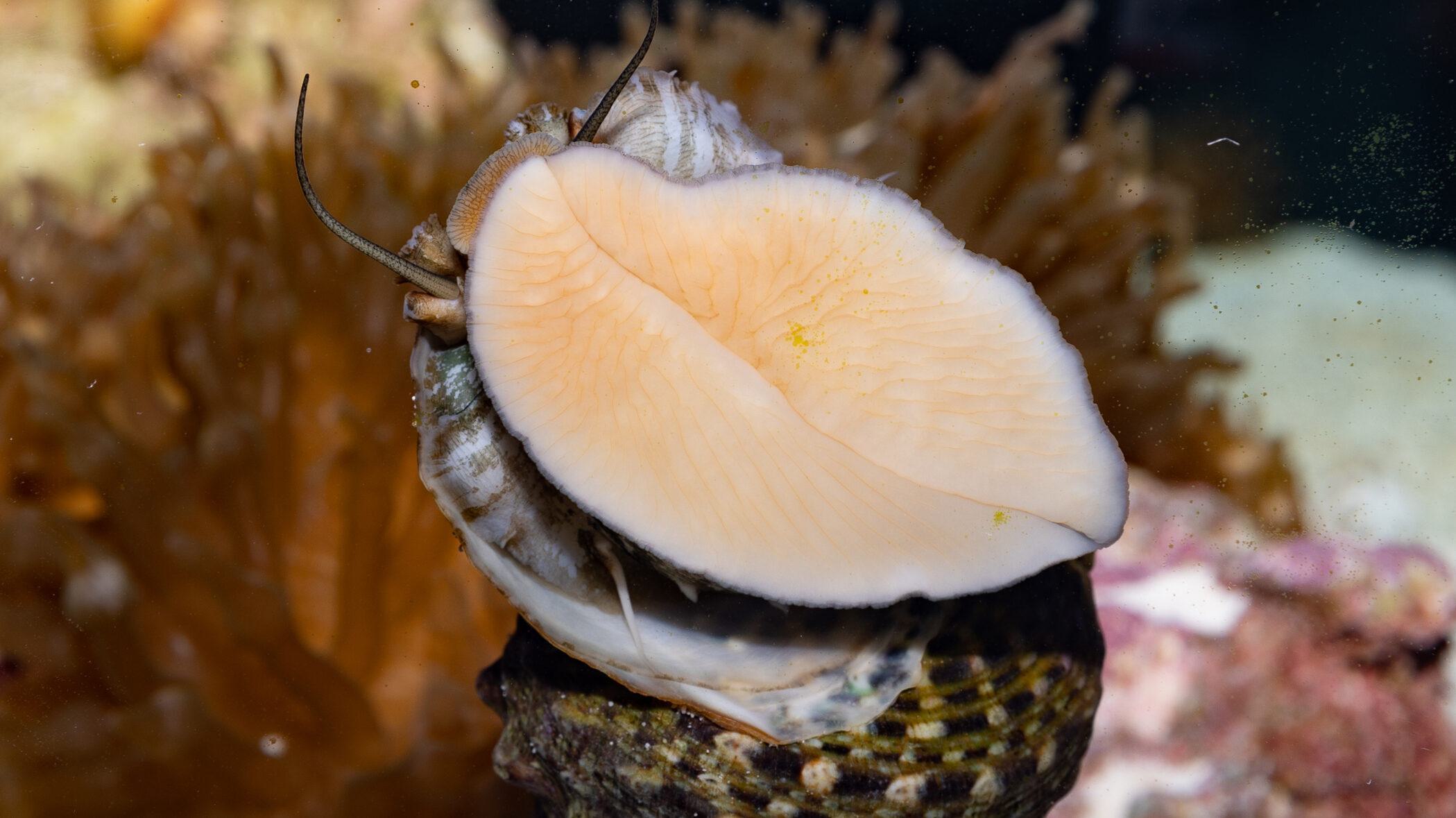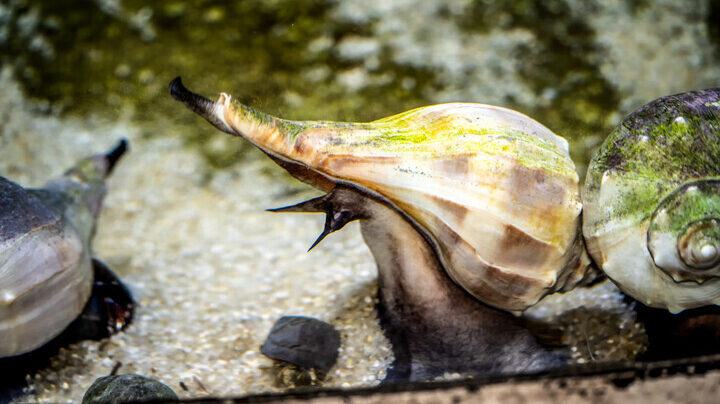Length: Up to 1 foot in length or more.
This gastropod is a large predatory sea snail and one of 50 species of whelks. Their thick ivory shells have 6 coils that spiral clockwise, with an "aperture" or inside area of the wide opening that is usually orange. Knob-like protrusions emerge from the widest part of the coil, giving the species its name. The shell of most knobbed whelks is "dextral," in which the opening of the shell is on the animal's right side if you were to hold the shell up with the spiral end upward and the opening facing you. A left-hand opening in the shell is called "sinistral."
Diet
Knobbed whelks forage on intertidal flats and in creeks edged with oyster reefs, preying on bivalves like oysters, scallops, and clams.
Habitat
Knobbed whelks thrive in the sub-tidal zone but will migrate between deep and shallow water, depending on the season. During seasons of extreme temperature like summer and winter, these sea snails migrate further out to depths of 48 meters. During milder spring and fall months, they are more commonly found in shallow water in intertidal mud and sand flats. It is during this time that mating and egg-laying occur. Since they must remain most, they avoid the mid-day heat by burrowing into the sand.
Feeding
Knobbed whelks use the edge of their shells to pry open the shells of their bivalve pry, then rasp at the flesh using a rough, tongue-like organ called a "radula" that has thousands of tiny tooth-like protrusions known as "denticles."
Reproductive Behavior
Knobbed whelks reproduce internally, then create a string of "egg capsules" that hold 20-100 eggs each. Some strings can reach up to 3 feet in length.
The knobbed whelk is not considered at risk of population decline currently, and so they are not evaluated, and thereby classified as Data Deficient by the IUCN.


